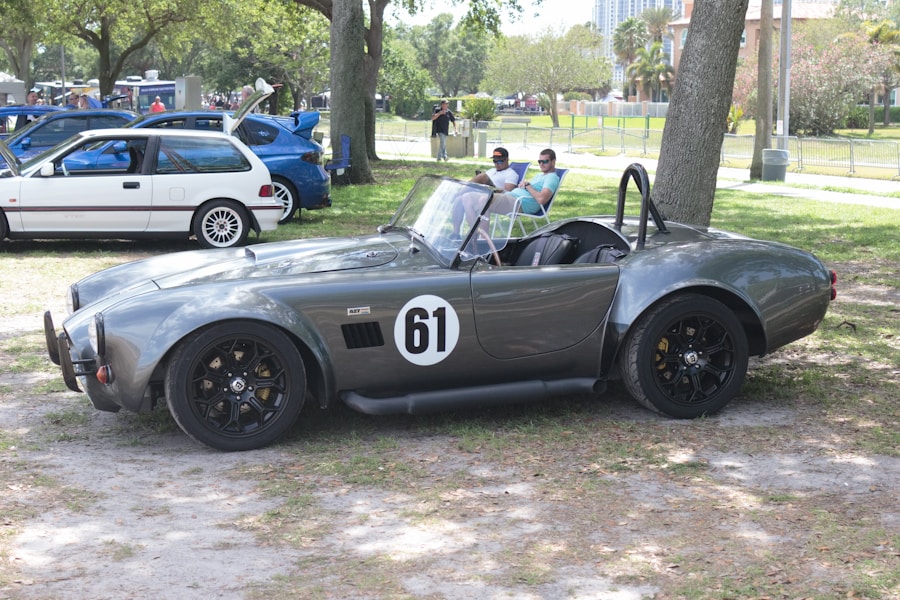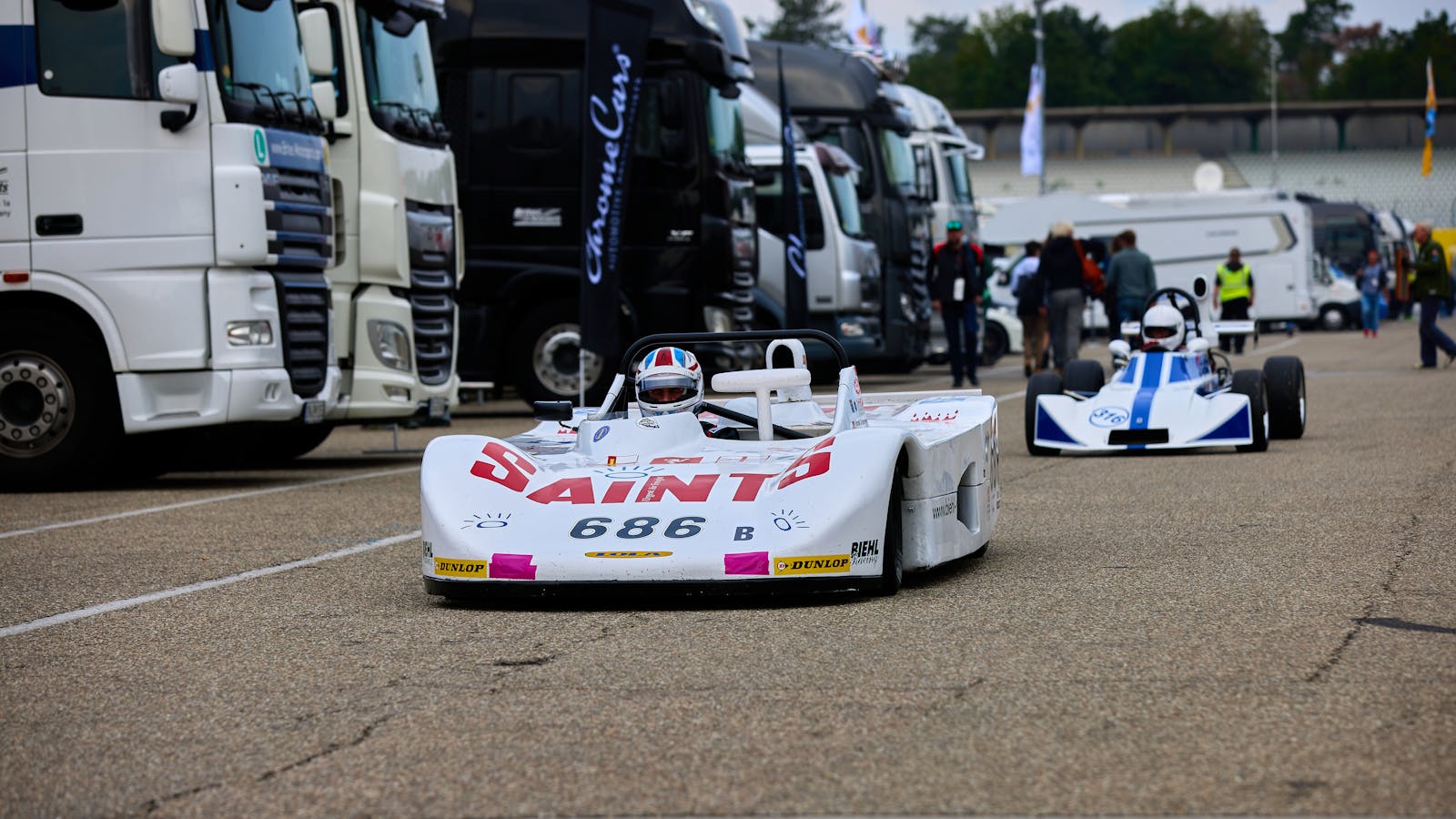Sebring Raceway, located in the heart of Florida, has a rich history that dates back to its origins as a World War II airfield. Originally known as Hendricks Field, the site was established in 1941 and served as a training ground for B-17 bomber crews. After the war, the airfield was repurposed for motorsport, with the first race taking place in 1952.
The transformation from military airstrip to racing circuit was not merely a change of use; it represented a shift in American culture, where the post-war enthusiasm for automobiles and speed found a new outlet. The airfield’s long, wide runways and surrounding terrain provided an ideal setting for racing, allowing for high-speed competition that would soon attract both drivers and fans from around the globe. The inaugural race at Sebring was a 12-hour endurance event, which quickly became a hallmark of the track’s identity.
The layout of the circuit utilized the existing runways and taxiways, creating a unique blend of high-speed straights and challenging turns. This configuration not only tested the limits of the cars but also the endurance and skill of the drivers. The first race drew a modest crowd, but it laid the groundwork for what would become one of the most prestigious endurance races in the world.
Over the years, Sebring evolved from a simple airfield into a full-fledged racing venue, complete with grandstands, pit facilities, and spectator amenities, all while retaining its historical charm.
Key Takeaways
- Sebring Raceway was originally an airfield used for training during World War II before being converted into a racing track in 1950.
- The 12 Hours of Sebring is one of the most historic and prestigious endurance races in the world, attracting top drivers and teams.
- The 1950s and 1960s marked the golden age of Sebring Raceway, with iconic cars and legendary drivers dominating the track.
- Sebring Raceway has evolved over the years to accommodate modern racing technology and safety standards while still preserving its classic charm.
- Famous drivers and teams such as Ferrari, Porsche, and Audi have left their mark on Sebring Raceway, contributing to its rich motorsport history.
Sebring’s Historic Races: The 12 Hours of Sebring
A Spectacle of Prototypes and GT Cars
The race itself is a spectacle, featuring a mix of prototypes and GT cars battling it out on the challenging 3.74-mile circuit. Over the years, many legendary moments have unfolded at Sebring, including dramatic crashes, strategic pit stops, and nail-biting finishes that have left spectators on the edge of their seats. The race has seen its share of iconic winners, including brands like Ferrari, Porsche, and Audi, each leaving an indelible mark on the history of this storied event.
A Celebration of Endurance Racing
The 12 Hours of Sebring is not merely a test of speed; it is a celebration of endurance racing that has captivated fans for decades.
The Golden Age of Sebring Raceway: 1950s and 1960s

The 1950s and 1960s are often referred to as the golden age of Sebring Raceway, a period marked by significant advancements in automotive technology and an explosion of interest in sports car racing. During these decades, Sebring became a proving ground for manufacturers eager to showcase their engineering prowess. The track hosted some of the most iconic races in history, attracting top-tier talent from around the world.
This era saw the rise of legendary drivers such as Juan Manuel Fangio and Carroll Shelby, who not only competed but also contributed to the development of racing technology. The allure of Sebring during this time was amplified by its unique atmosphere. The combination of challenging track conditions and unpredictable weather made every race an unpredictable affair.
Teams had to adapt quickly to changing circumstances, often leading to thrilling on-track battles that kept fans engaged from start to finish. The 12 Hours of Sebring became a rite of passage for drivers and teams alike, with many considering it one of the most challenging endurance races in existence. The camaraderie among competitors added to the charm; rivalries were fierce on the track but often gave way to friendships off it.
The Evolution of Sebring Raceway: From Classic Cars to Modern Racing
| Year | Track Length (miles) | Number of Turns | Top Speed (mph) |
|---|---|---|---|
| 1950 | 5.2 | 16 | 120 |
| 1970 | 5.2 | 17 | 180 |
| 1990 | 3.7 | 17 | 190 |
| 2010 | 3.74 | 17 | 215 |
As motorsport evolved through the late 20th century into the 21st century, so too did Sebring Raceway. The transition from classic cars to modern racing machines marked a significant shift in both technology and competition style. With advancements in aerodynamics, materials science, and engine performance, modern race cars are capable of achieving speeds that were once unimaginable.
This evolution has necessitated changes to the track itself; safety measures have been enhanced with improved barriers and runoff areas to protect drivers at these higher speeds. The introduction of new racing classes has also diversified the competition at Sebring. While traditional sports cars still compete in events like the 12 Hours of Sebring, newer categories such as LMP (Le Mans Prototype) and GTD (GT Daytona) have emerged, bringing with them cutting-edge technology and fierce competition.
These modern classes have attracted manufacturers like Toyota, Ford, and Chevrolet, each eager to showcase their latest innovations on one of the most challenging circuits in North America. This evolution has not only kept Sebring relevant but has also solidified its status as a premier destination for motorsport enthusiasts.
Famous Drivers and Teams at Sebring Raceway
Throughout its storied history, Sebring Raceway has been graced by some of the most talented drivers and teams in motorsport history. Names like Mario Andretti, A.J. Foyt, and Derek Bell have all left their mark on this iconic track.
Each driver brought their unique style and approach to racing, contributing to Sebring’s rich tapestry of stories and legends. For instance, Mario Andretti’s victory at Sebring in 1967 was not just a personal triumph; it was a pivotal moment for American motorsport as he became one of the first American drivers to achieve international acclaim. Teams such as Porsche and Ferrari have also played pivotal roles in shaping Sebring’s legacy.
Porsche’s dominance in endurance racing during the late 20th century is exemplified by their numerous victories at Sebring, where they showcased their engineering excellence and strategic prowess. Ferrari’s storied rivalry with Porsche during this period added an extra layer of excitement to the races, captivating fans with their fierce competition on track. These legendary drivers and teams have not only contributed to Sebring’s history but have also inspired generations of racers who aspire to compete on this hallowed ground.
The Impact of Sebring Raceway on Motorsport Culture
A Gathering Point for Enthusiasts
The annual 12 Hours of Sebring serves as a gathering point for enthusiasts who share a passion for speed and competition. This sense of community is palpable during race weekends when fans come together to celebrate their love for motorsport, creating an atmosphere that is both festive and reverent.
Influence on Automotive Culture
Moreover, Sebring has influenced automotive culture beyond just racing. The track’s legacy has inspired countless films, documentaries, and books that explore its history and significance within motorsport. Iconic moments from races have been immortalized in popular culture, further embedding Sebring into the fabric of automotive lore.
A Critical Site for Innovation
Additionally, many manufacturers use Sebring as a testing ground for new technologies before they hit the market, showcasing its importance not just as a racing venue but also as a critical site for automotive innovation.
Sebring Raceway’s Endurance Racing Legacy
The legacy of endurance racing at Sebring is unparalleled. As one of the oldest endurance races in North America, it has set standards for what endurance racing should embody: resilience, strategy, and teamwork. The grueling nature of the 12-hour format challenges both drivers and teams to push their limits while maintaining focus over an extended period.
This aspect has made it a favorite among fans who appreciate not just speed but also the tactical elements that come into play during such long races. Sebring’s reputation as an endurance racing venue has attracted international attention over the years. It serves as a critical stop on various racing calendars, including those governed by IMSA (International Motor Sports Association) and FIA (Fédération Internationale de l’Automobile).
The track’s ability to host diverse classes—from prototypes to GT cars—ensures that it remains relevant in an ever-evolving motorsport landscape. This legacy continues to inspire new generations of racers who aspire to etch their names into Sebring’s storied history.
The Future of Sebring Raceway: Innovations and Sustainability
Looking ahead, Sebring Raceway is poised to embrace innovations that will shape its future while prioritizing sustainability within motorsport. As environmental concerns become increasingly pressing across all sectors—including motorsport—Sebring is exploring ways to reduce its carbon footprint while maintaining its status as a premier racing venue. Initiatives such as solar energy installations and waste reduction programs are being implemented to ensure that future generations can enjoy this iconic track without compromising environmental integrity.
Additionally, advancements in technology are set to redefine how races are conducted at Sebring. From enhanced telemetry systems that provide real-time data analysis to improvements in safety protocols through advanced materials and design techniques, innovation will continue to play a crucial role at this historic venue. As electric vehicles gain traction within motorsport circles, Sebring may also adapt its events to include electric racing categories, ensuring that it remains at the forefront of automotive evolution while honoring its rich heritage.
Sebring Raceway stands as a testament to the enduring spirit of motorsport—a place where history meets innovation and where every lap tells a story steeped in passion and perseverance.








Leave a Reply